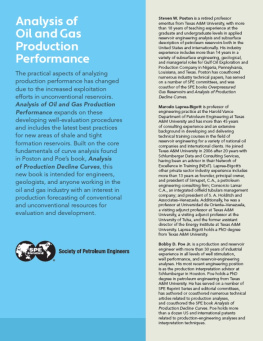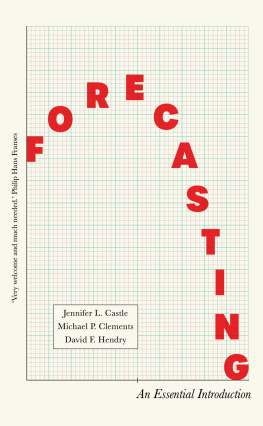
Yield Curve Modeling and Forecasting
THE ECONOMETRIC AND TINBERGEN INSTITUTES LECTURES
Series Editors
Herman K. van Dijk and Philip Hans Franses
The Econometric Institute,
Erasmus University Rotterdam
The Econometric Institute Lectures series is a joint project of Princeton University Press and the Econometric Institute at Erasmus University Rotterdam.
This series collects the lectures of leading researchers which they have given at the Econometric Institute for an audience of academics and students.
The lectures are at a high academic level and deal with topics that have important policy implications. The series covers a wide range of topics in econometrics. It is not confined to any one area or sub-discipline.
The Econometric Institute is the leading research center in econometrics and management science in the Netherlands. The Institute was founded in 1956 by Jan Tinbergen and Henri Theil, with Theil being its first director. The Institute has received worldwide recognition with an advanced training program for various degrees in econometrics.
Other books in this series include
Anticipating Correlations: A New Paradigm for Risk Management by Robert Engle
Complete and Incomplete Econometric Models by John Geweke
Social Choice with Partial Knowledge of Treatment Response by Charles F. Manski
Yield Curve Modeling and Forecasting
The Dynamic Nelson-Siegel Approach
Francis X. Diebold and Glenn D. Rudebusch
Princeton University Press
Princeton and Oxford
Copyright 2013 by Princeton University Press
Published by Princeton University Press,
41 William Street, Princeton, New Jersey 08540
In the United Kingdom: Princeton University Press,
6 Oxford Street, Woodstock, Oxfordshire OX20 1TW
press.princeton.edu
All Rights Reserved
Library of Congress Cataloging-in-Publication Data
Diebold, Francis X., 1959
Yield curve modeling and forecasting: the dynamic Nelson-Siegel approach / Francis X. Diebold, Glenn D. Rudebusch.
p. cm. - (The Econometric and Tinbergen Institutes lectures)
Includes bibliographical references and index.
ISBN 978-0-691-14680-5 (hardcover: alk. paper)
1. BondsMathematical models.
I. Rudebusch, Glenn D., 1959 II. Title.
HG4651.D537 2013
332.632042dc23 2012020360
British Library Cataloging-in-Publication Data is available
This book has been composed in Computer Modern using 
Typeset by  Productions Ltd, London
Productions Ltd, London
Printed on acid-free paper. 
Printed in the United States of America
10 9 8 7 6 5 4 3 2 1
To our wives
Contents
Illustrations
Figures
Tables
Introduction
The Econometric and Tinbergen Institute Lectures deal with topics in econometrics that have important policy implications. The lectures cover a wide range of topics and are not confined to any one area or subdiscipline. Leading international scientists in the fields of econometrics in which applications play a major role are invited to give three-day lectures on a topic to which they have contributed significantly.
The 2012 lectures deal with the topic of describing and modeling the dynamic behavior of a large cross section of financial assets, such as Treasury bonds. Understanding their evolution is crucial for implied policy analysis. The understanding refers to expectation and pricing mechanisms that are part of the so-called Nelson-Siegel approach and the implied policy analysis deals with such topics as dynamic portfolio allocation and hedging investment risks of financial assets. Frank Diebold and Glenn Rudebusch have written a lucid book on these topics that are situated at the interface of macroeconomics and finance. Results of their research, reported in this book, are relevant for academic researchers as well as professionals in the banking and financial sector.
As editors of the series we are indebted to the Econometric and Tinbergen Institutes for continued support for the series.
Philip Hans Franses and Herman K. van Dijk
Econometric and Tinbergen Institutes
Erasmus School of Economics
Preface
Understanding the dynamic evolution of the yield curve is important for many tasks, including pricing financial assets and their derivatives, managing financial risk, allocating portfolios, structuring fiscal debt, conducting monetary policy, and valuing capital goods. To investigate yield curve dynamics, researchers have produced a huge literature with a wide variety of models. In our view it would be neither interesting nor desirable to produce an extensive survey. Indeed our desire is precisely the opposite: We have worked hard to preserve the sharp focus of our Econometric Institute and Tinbergen Institute (EITI) Lectures, delivered in Rotterdam in June 2010, on which this book is based.
Our sharp focus is driven by an important observation: Most yield curve models tend to be either theoretically rigorous but empirically disappointing, or empirically successful but theoretically lacking. In contrast, we emphasize in this book two intimately related extensions of the classic yield curve model of Nelson and Siegel (1987). The first is a dynamized version, which we call dynamic Nelson-Siegel (DNS). The second takes DNS and makes it arbitrage-free; we call it arbitragefree Nelson-Siegel (AFNS). Indeed the two models are just slightly different implementations of a single, unified approach to dynamic yield curve modeling and forecasting. DNS has been highly successful empirically and can easily be made arbitrage-free (i.e., converted to AFNS) if and when that is desirable.
Our intended audience is all those concerned with bond markets and their links to the macroeconomy, whether researchers, practitioners, or students. It spans academic economics and finance, central banks and NGOs, government, and industry. Our methods are of special relevance for those interested in asset pricing, portfolio allocation, and risk management.
We use this book, just as we used the EITI Lectures, as an opportunity to step back from the signposts of individual journal articles and assess the broader landscapewhere weve been, where we are, and where were going in terms of the whats and whys and hows of yield curve modeling, all through a DNS lens. Our methods and framework have strong grounding in the best of the past, yet simultaneously they are very much intertwined with the current research frontier and actively helping to push it outward.
We begin with an overview of yield curve facts and quickly move to the key fact: Beneath the high-dimensional set of observed yields, and guiding their evolution, is a much lower-dimensional set of yield factors. We then motivate DNS as a powerful approximation to that dynamic factor structure. We treat DNS yield curve modeling in a variety of contexts, emphasizing both descriptive aspects (in-sample fit, out-of-sample forecasting, etc.) and efficient-markets aspects (imposition of absence of arbitrage, whether and where one would want to impose absence of arbitrage, etc.). We devote special attention to the links between the yield curve and macroeconomic fundamentals.
We are pleased to have participated in the DNS research program with talented co-authors who have taught us much en route: Boragan Aruoba, Jens Christensen, Lei Ji, Canlin Li, Jose Lopez, Monika Piazzesi, Eric Swanson, Tao Wu, and Vivian Yue. Christensens influence, in particular, runs throughout this book.
Next page







![Galit Shmueli - Practical Time Series Forecasting: A Hands-On Guide [2nd Edition]](/uploads/posts/book/82184/thumbs/galit-shmueli-practical-time-series-forecasting.jpg)


 Productions Ltd, London
Productions Ltd, London